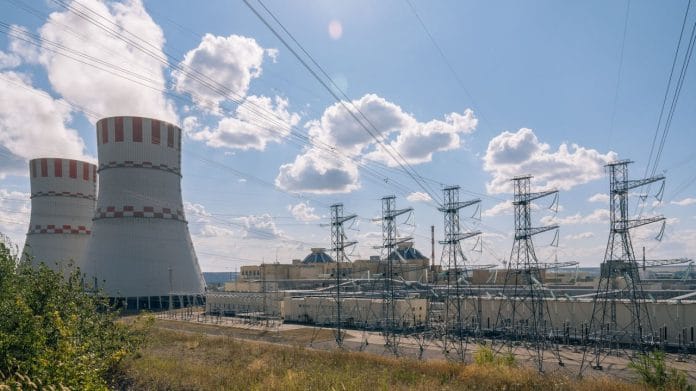A batch of fifth-generation nuclear fuel assemblies, TVS-5, has been loaded into the VVER-1200 reactor core of unit No. 6 of Novovoronezh NPP in Russia, says a press release.
The bundles of the newly designed uranium-plutonium fuel will undergo pilot operation in three 18-month fuel cycles along with the regular fuel matrix based on enriched uranium dioxide.
This is a part of the implementation of the strategic shift to the dual-component nuclear power system with a closed nuclear fuel cycle.
The fuel bundles have been manufactured by the Novosibirsk Chemical Concentrates Plant (an enterprise of Rosatom’s Fuel Division).
The design features of TVS-5 enable fabrication of VVER-1200 fuel bundles in a fully automated mode, which is necessary for the development of industrial-scale fabrication of uranium-plutonium fuel for VVER reactors.
“One of the tasks for closing the nuclear fuel cycle within the dual-component nuclear power system is the introduction of fuel made of regenerated nuclear materials, also for the classical thermal neutron reactors,” commented Alexander Ugryumov, Senior Vice President for Research and Development at TVEL, the main company of the Rosatom Fuel Division.
This requires the development of industrial-scale production, which should be fully automated, just like fuel fabrication for the fast reactors. The start of TVS-5 at Novovoronezh NPP is a necessary step for validation of such a fabrication project,” he said.
The Russian nuclear industry development strategy for the decades ahead is aimed at the development of the dual-component nuclear power industry with thermal and fast neutron reactors, introducing the solutions of the closed nuclear fuel cycle, such as fabrication of fresh uranium-plutonium fuel from spent fuel. As fast reactors become more widespread, a balance in the “circulation” of nuclear fuel materials between fast and thermal reactors is expected to be achieved.

